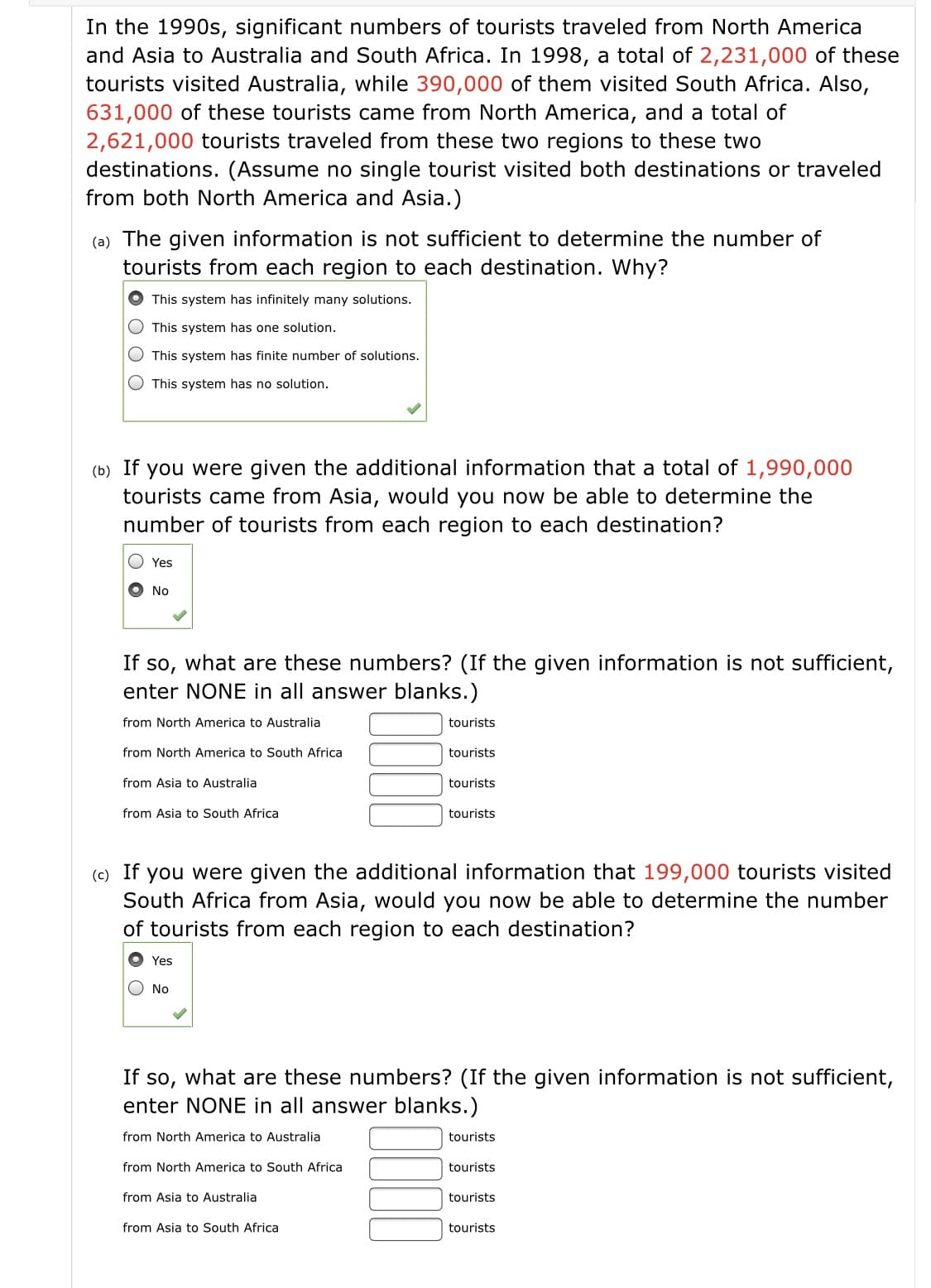In the 1990s, significant numbers of tourists traveled from North America and Asia to Australia and South Africa. In 1998, a total of 2,231,000 of these tourists visited Australia, while 390,000 of them visited South Africa. Also, 631,000 of these tourists came from North America, and a total of 2,621,000 tourists traveled from these two regions to these two destinations. (Assume no single tourist visited both destinations or traveled from both North America and Asia.)
In the 1990s, significant numbers of tourists traveled from North America and Asia to Australia and South Africa. In 1998, a total of 2,231,000 of these tourists visited Australia, while 390,000 of them visited South Africa. Also, 631,000 of these tourists came from North America, and a total of 2,621,000 tourists traveled from these two regions to these two destinations. (Assume no single tourist visited both destinations or traveled from both North America and Asia.)
Linear Algebra: A Modern Introduction
4th Edition
ISBN:9781285463247
Author:David Poole
Publisher:David Poole
Chapter2: Systems Of Linear Equations
Section2.4: Applications
Problem 28EQ
Related questions
Topic Video
Question

Transcribed Image Text:In the 1990s, significant numbers of tourists traveled from North America
and Asia to Australia and South Africa. In 1998, a total of 2,231,000 of these
tourists visited Australia, while 390,000 of them visited South Africa. Also,
631,000 of these tourists came from North America, and a total of
2,621,000 tourists traveled from these two regions to these two
destinations. (Assume no single tourist visited both destinations or traveled
from both North America and Asia.)
(a) The given information is not sufficient to determine the number of
tourists from each region to each destination. Why?
This system has infinitely many solutions.
O This system has one solution.
O This system has finite number of solutions.
O This system has no solution.
(b) If
you were given the additional information that a total of 1,990,000
tourists came from Asia, would you now be able to determine the
number of tourists from each region to each destination?
O Yes
O No
If so, what are these numbers? (If the given information is not sufficient,
enter NONE in all answer blanks.)
from North America to Australia
tourists
from North America to South Africa
tourists
from Asia to Australia
tourists
from Asia to South Africa
tourists
(c) If you were given the additional information that 199,000 tourists visited
South Africa from Asia, would you now be able to determine the number
of tourists from each region to each destination?
O Yes
No
If so, what are these numbers? (If the given information is not sufficient,
enter NONE in all answer blanks.)
from North America to Australia
tourists
from North America to South Africa
tourists
from Asia to Australia
tourists
from Asia to South Africa
tourists
Expert Solution
This question has been solved!
Explore an expertly crafted, step-by-step solution for a thorough understanding of key concepts.
This is a popular solution!
Trending now
This is a popular solution!
Step by step
Solved in 4 steps

Knowledge Booster
Learn more about
Need a deep-dive on the concept behind this application? Look no further. Learn more about this topic, advanced-math and related others by exploring similar questions and additional content below.Recommended textbooks for you

Linear Algebra: A Modern Introduction
Algebra
ISBN:
9781285463247
Author:
David Poole
Publisher:
Cengage Learning

Linear Algebra: A Modern Introduction
Algebra
ISBN:
9781285463247
Author:
David Poole
Publisher:
Cengage Learning